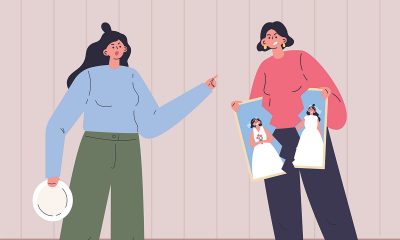a&e features
With Crew Club closing, what’s the future of the gay bathhouse in D.C. and beyond?
Handful of major U.S. cities lack private sex clubs
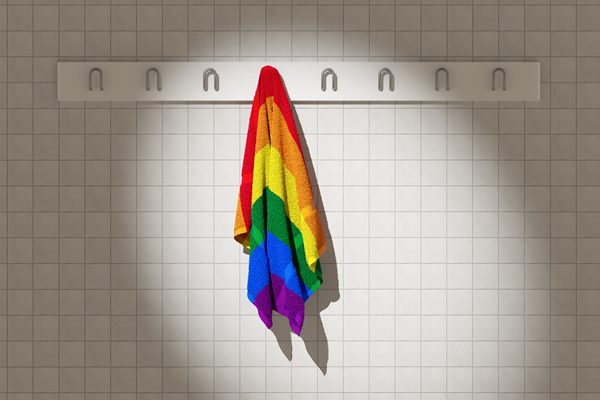
Even in 2020, no one the Blade contacted would go on the record to talk about their experiences at the Crew Club, the Washington gay gym and bathhouse that will end its 25-year run next month.
It wasn’t hard finding folks who went — the club near Logan Circle has always been popular. But attribution was hard to pin down.
“I would go occasionally. It was very hit or miss,” one Washington gay man said. “Going on a Saturday night around 2 a.m. could be insane on some nights though. Cute, tipsy out-of-town gays who were cute and fun. I had some crazy times in the sauna and steam room.”
It’s fair to say many gay and bi men in the region will miss the club. Owner DC Allen sold the building mid-2016 to a real estate developer, a deal that’s estimated to have netted them more than twice what they paid for it in 2003, according to city tax records. The 8,000-square-foot, two-story building was assessed at a value of more than $5 million for 2020, according to previous Blade reports. He cited the health of his partner and his own health (they’re 70 and 63 respectively) as the main reason they opted not to seek another location.
“We would not, at this point in time, be able to make our money back and I don’t know how we could retire if we had another business,” he said.
Allen, circumspect in a brief phone interview this week, declined to make any of his 15 employees available for comment.
He said hook-up apps like Scruff and Grindr did impact the business for “the next couple of years” after they took off, but things subsequently improved.
“Some of the more marginalized [gay bathhouses] went out of business, but the rest of us saw a regular amount of business after three-five years,” he said. “There was a correction.”
He said he kept no records on how many of his clientele were locals vs. out-of-towners. Upholding a “very strict policy for our clientele,” was of utmost importance, Allen said.
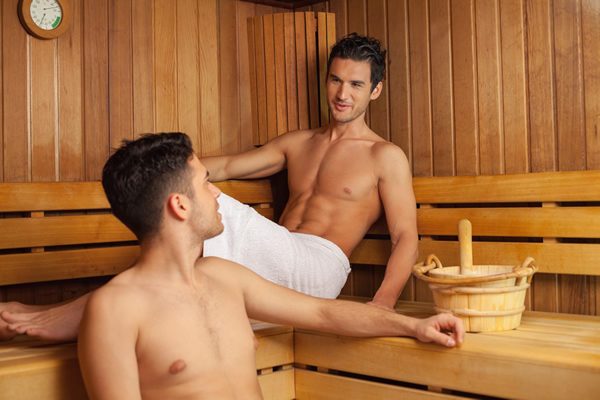
So is the Crew Club’s closing a one-off or is the industry — which has been around in various forms since the Roman Empire — slowly becoming a thing of the past? A Guardian article from 2014 painted a picture of dwindling businesses and an industry that had its heyday in the ’70s. It claimed about 70 were in business at the time, down from about 200 in the disco era, figures current industry insiders say are roughly accurate.
And how likely is it that some other entrepreneur will eventually open another gay bathhouse here with Washington’s astronomical real estate prices and ongoing gentrification? Not to mention the lack of a Council member such as the late Jim Graham (who was gay) to help work through the red tape much as he did by gay businesses, such as Ziegfeld’s/Secrets, that were displaced more than a decade ago by Nationals Stadium?
Glorious Health Club (2120 West Virginia Ave., N.E.) survived the stadium invasion but was shuttered last March by the city for multiple building code violations. Its owners are hoping to open this month pending another inspection.
But it’s not the apps, overall gay mainstreaming or waning Millennial (or Gen Z) interest that is the biggest threat to U.S. gay bathhouses. The biggest issue, one long-time veteran of the industry says, is escalating real estate prices in metro areas that have enough gay population to sustain them.
Dennis Holding came out in 1971 and met Jack Campbell, who he says “pretty much was the founder” of The Club gay bathhouse chain, in 1972 in Cleveland. Holding became an investor that year in a gay bathhouse in Indianapolis (Club Indianapolis), which is still open, and has been in business for 47 years as an investor/partner. Today, he and others are behind gay bathhouses in three cities — Houston (Club Houston), Orlando (Club Orlando) and Miami (Club Aqua Miami). He’s also friendly with many others in the industry and says the situation in Washington, sadly, is not unusual.
“The greatest threat to the business is the cost of real estate and the old age of the owners,” he said by phone this week from his second home in Palm Springs. “What happened in D.C. is they couldn’t find a clear way for the operation to continue without them physically being involved and their capital, the bulk of their net worth was tied up in real estate. … I know of two or three other groups that have closed or seen their operations dwindle in the last five-seven years I guess in which the senior partner passes away and the shares end up sometimes in the hands of non-gay relatives — a sister, a brother, maybe a boyfriend, a boyfriend’s family, whatever, and they don’t quite know how to handle all of it. Their succession plans are very weak.”
Holding (who has his own succession plan in place) says in some cases a straight relative has continued a gay bathhouse business — he mentions a straight owner who formerly had clubs in Dallas, Austin and Milwaukee, who ran them for years but eventually decided to sell to hungry real estate developers rather than modernize or update the clubs.
“Sometimes it’s the right thing to do business wise,” Holding says. “He probably made about $6 million, they built an apartment house or two, and he moves to his hometown in California and has a nice, comfortable life. His kids had no interest in it and his father was about 95. There have been several situations like that where the real estate has just become so valuable.”
Holding says other clubs will likely see the same fate in time.
“I know of an operator who turned down $8 million for his real estate a month ago,” Holding says. “That’s the evil side of it, and it has nothing to do with the business.”
At the height of the app scare about seven years ago, gay bathhouse owners united to form the Men’s Sauna Association (gaybathhousesauna.com) aka the North American Bathhouse Association (NABA). The preferred industry word now, members say, is sauna. Bathhouse sounds seedy and dated, some say.
About 90 percent of gay bathhouses/saunas in the U.S. are members. They joined forces for several reasons — joint bargaining power with suppliers, to provide aid to new businesses getting the run-around from various municipalities not interested in “adult” businesses, to brainstorm how to make the apps work to their advantage and other matters of joint interest.
The industry, overall, is quite strong, says Tom Gatz-Nibbio, NABA executive director. All the major U.S. chains — Clubs (Indianapolis, Pittsburgh, Philadelphia, Dallas, Columbus), Steamworks (Berkeley, Chicago, Seattle) and Midtowne Spa (Los Angeles, Denver) are members. He says the businesses that are doing the best are the ones whose owners have invested in serious remodeling.
“They’re really the industry leaders,” Gatz-Nibbio says. “The ones who have really stepped up and remodeled to provide a clean, safe environment.”
Holding agrees. He estimates annual U.S. revenue industry wide to be approaching $100 million. Club Houston just finished a major renovation a few months ago.
“Our slogan is ‘good clean fun,’” he says. Cleanliness is critical to the success of the business. And having what I call attractions in the play areas, the dark room — you need to have clever places to play but dirty, dank, smelly — that doesn’t work.”
Gatz-Nibbio scrolls mentally over the country, mentioning markets not yet referenced here. He knows of two in New York City (East Side Club, West Side Club) and says it’s odd there aren’t more in that market. He says private sex parties are more “a thing” there. One closed in Chicago, but another remains. There are two each in Detroit and Las Vegas. Denver, Phoenix, Atlanta and San Diego each have one. Seattle has a Steamworks. One closed in Honolulu. There are none in San Francisco proper (the city outlawed them at the height of the AIDS crisis) but there is one nearby in Berkeley (Steamworks Berkeley) and another in San Jose (The Watergarden). Some exist in unexpected markets — Grand Rapids, Mich., (The Diplomat Club) and Colorado Springs, Colo. (Buddies Private Club).
Washington could soon join Boston and New Orleans as major U.S. cities lacking one. Prohibitive real estate costs, especially anywhere near the French Quarter, have prevented anything from blossoming there, Gatz-Nibbio says.
Holding says the apps turned out to be more of a hiccup than any serious disruption.
“We felt it at first until people started realizing going into a stranger’s home or having a stranger into your home isn’t always the smartest thing to do,” he says. “And people started to wake up to the false advertising. You’re expecting a 6 foot, 2 blonde hunk but the real thing at the door is not that.”
Gatz-Nibbio says some apps are working with the saunas in joint partnerships. Squirt, for example, was at the last NABA convention and is partnering on an initiative.
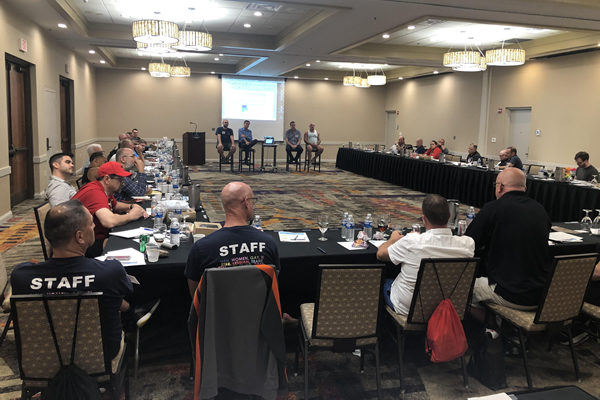
December was a record month for Holding in Houston and Miami. He’s friendly with the owner of Club Dallas, which he says is also booming.
“It might have slowed growth a little, but we never lost money,” he says.
A much bigger scare years ago, of course, was AIDS.
“The day Rock Hudson died, our business fell off about 40, 50 percent,” Holding says.
Working with area health departments, offering testing in the clubs and, of course, later the advances of protease inhibitors helped things rebound.
“We never stopped being profitable,” he says. “We just cut a lot of expenses. We ran with less labor, which was a big factor, we just tightened our belts. I remember the first meeting after we realized we’d just been really walloped, but we just tightened our belts. We had limited profitability, then good profitability within four to five years, I guess.”
Escorting and prostitution were never big problems, Holding says. Most members reported them to staff if they were propositioned. Police usually were happy to work with them.
He says a police squad in Dallas was known to be overzealous in previous years.
“They thought we were just a den of iniquity,” he says with a chuckle. “But it was mainly about drugs. They liked to break down doors and have mass arrests but eventually we convinced them not to be stupid about it and we’d work with them.”
Drugs, he says, are a constant issue. A list of barred patrons is kept for those who violate the policy. Too rigorous a bag or body check at the door deters customers, he says.
In other ways, police liked having the businesses there, he says.
“They like it because if they catch somebody in a park or public place, they can say, ‘Get out of here you asshole, you know there’s a place you can go for that.’ That’s basically been their attitude. It’s not warm and friendly, but they like it that there’s a place in town you can go for that and that’s fine by us. That’s the way it should be.”
Holding never kept records of how many of his clients were semi-local to each business vs. out of town. If local is a 40-mile radius, he guesses the majority are local if for no other reason than the business tends to do well with repeat consumers. It’s an older crowd in the daytime, and owners cater to them.
Not everyone is there for sex, he says. The music and lighting changes after 6 p.m., when the working-age crowd tends to come. Get them in once — for an open house, a guest visit or whatever — and if the club is clean and well run, they’ll be back, he says.
Holding knows of no horror stories of anti-gay city bureaucracies holding up entrepreneurs. He’s never heard of a citizen petition movement against a pending gay bathhouse. A business association his Orlando property was seeking to join many years ago was headed by two lesbians who took issue with the no women policy, but that eventually blew over. He can recall no major pushback from LGBT activist organizations that have sometimes painted heteronormative pictures of gay life to conservative constituents.
Allen says one change he noticed over the years was how credit card use spiked from roughly 20 percent in his early years in business to about 70-80 percent today.
“What that means is people no longer have a fear of being gay, they don’t really care,” Allen says. “That confidence and that freedom is from 40 years of activism.”
a&e features
Looking back at the 10 biggest A&E stories of 2025
‘Wicked,’ Lady Gaga’s new era, ‘Sexy’ Bailey and more

Although 2025 was a year marked by countless attacks on trans rights and political setbacks, the year also saw brilliant queer artists continuing to create art. From Cannes and Sundance Award winners now vying for Oscar consideration to pop icons entering new stages of their careers, queer people persevered to tell their stories through different media.
With the state of the world so uncertain, perhaps there’s no more vital time to celebrate our wins, as seen through some of this year’s top pop culture moments. While there’s no collection of 10 stories that fully encompass “the most important” news, here are some events that got the gays going:
10. ‘Mysterious Gaze of the Flamingo’ wins big at Cannes

The Cannes Film Festival has become a crucial start for films hoping to make their way to the Oscars, and first-time director Diego Céspedes won the top Un Certain Regard prize for his intimate western “The Mysterious Gaze of the Flamingo.” The film is set in the ‘80s and is intended as an allegory for the AIDS epidemic. Seeing a film that unpacks vital queer history win one of the most coveted awards at Cannes has been a huge point of pride in the independent filmmaking community.
Since the film bowed at Cannes, it has been selected as Chile’s Oscar entry in the Best International Feature race. Speaking with The Blade during the film’s AFI Fest run in October, Céspedes said: At first, I was kind of scared to have this campaign position in the times that we’re living [in] here. But at the same time, I think the Oscars mean a huge platform — a huge platform for art and politics.”
9. ‘The Last of Us’ returns for an even gayer season 2
While the first season of The Last of Us gave us one of TV’s most heartbreaking queer love stories in the episode “Long, Long Time,” Season 2 doubled down on its commitment to queer storytelling with the blossoming relationship between Ellie (Bella Ramsey) and Dina (Isabela Merced). The show expanded on the pair’s relationship in the original video game, making it perhaps the central dynamic to the entire season. That unfortunately came with more homophobic backlash on the internet, but those who checked out all the episodes saw a tender relationship form amid the show’s post-apocalyptic, often violent backdrop. For their performance, Ramsey was once again nominated for an Emmy, but Merced deserved just as much awards attention.
8. ‘Emilia Pérez’ sparks controversy
Jacques Audiard’s genre-bending trans musical “Emilia Pérez” proved to be an awards season juggernaut this time last year, winning the Golden Globe for Best Musical/Comedy. But when the lead star Karla Sofia Gascón’s racist, sexist, and homophobic old tweets resurfaced, the film’s Oscar campaign became a tough sell, especially after Netflix had tried so hard to sell Emilia Pérez as the “progressive” film to vote for. Mind you, the film had already received significant backlash from LGBTQ+ audiences and the Mexican community for its stereotypical and reductive portrayals, but the Gascón controversy made what was originally just social media backlash impossible to ignore. The only person who seemed to come out of the whole debacle unscathed was Zoe Saldaña, who won the Oscar for Best Supporting Actress over Ariana Grande.
7. ‘Sorry, Baby’ establishes Eva Victor as major talent
Back in January at the Sundance Film Festival, Eva Victor (known by many for her brand of sketch comedy) premiered their directorial debut “Sorry, Baby” to rave reviews, even winning the Waldo Salt Screening Award. Victor shadowed Jane Schoenbrun on the set of “I Saw the TV Glow,” and seeing Victor come into their own and establish such a strong voice immediately made them one of independent cinema’s most exciting new voices. A memorable scene in the film sees the main character, Agnes (played by Victor), struggling to check a box for male or female, just one example of how naturally queerness is woven into the fabric of the story.
Most recently, Victor was nominated for a Golden Globe for her performance in the film, and she’s represented in a category alongside Jennifer Lawrence (“Die My Love”), Jessie Buckley (“Hamnet”), Julia Roberts (“After the Hunt”), Renate Reinsve (“Sentimental Value”) and Tessa Thompson (“Hedda”). The film also received four Independent Spirit Award nominations overall.
6. Paul Reubens comes out in posthumous doc

While Paul Reubens never publicly came out as gay before passing away in 2023, the two-part documentary “Pee-wee as Himself” premiered back in May on HBO Max, giving the legendary comedian a chance to posthumously open up to the world. Directed by Matt Wolf, the documentary explores how Reubens found his alter ego Pee-Wee Herman and why he kept his private life private.
The documentary won an Emmy in the Outstanding Documentary or Nonfiction Special category and remains one of the most critically acclaimed titles of the year with a 100% Rotten Tomatoes score. Also worth noting, the National Geographic documentary Sally told the posthumous coming out story of Sally Ride through the help of her long-time partner, Tam O’Shaughnessy.
5. Lady Gaga releases ‘Mayhem’
Lady Gaga entered a new phase of her musical career with the release of Mayhem, her seventh album to date. From the frenzy-inducing pop hit Abracadabra to the memorable Bruno Mars duet featured on “Die With a Smile,” seeing Gaga return to her roots and make an album for the most die-hard of fans was especially rewarding after the underwhelming film releases of “House of Gucci” and “Joker: Folie à Deux.” Gaga has been touring with The Mayhem Ball since July, her first arena tour since 2018. She even extended her tour into 2026 with more North American dates, so the party isn’t stopping anytime soon. And Gaga is even set to make an appearance next May in “The Devil Wears Prada 2.”
4. Cynthia Erivo, Ariana Grande perform at the Oscars

While “Wicked: For Good” didn’t quite reach the heights of the first film, we will forever have Cynthia Erivo and Ariana Grande’s breathtaking live performance that opened the 97th Academy Awards. The pair sang a rendition of “Over the Rainbow,” “Home,” and “Defying Gravity,” paying proper homage to the original 1939 “Wizard of Oz.” Even non-Wicked fans can’t deny how magical and brilliantly staged this performance was. With both Erivo and Grande up for acting Oscars last year, they’re hoping to repeat success and make history with consecutive nominations. Either way, let’s hope there’s another live performance in the making, especially with two new original songs (The Girl in the Bubble and No Place Like Home) in the mix.
3. Indya Moore speaks out against Ryan Murphy
Indya Moore has consistently used social media as a platform for activism, and in September, posted a 30-minute Instagram live speaking out against “Pose” co-creator Ryan Murphy. Moore claimed that Murphy wasn’t being a true activist for trans people. “Ryan Murphy, we need you to do more. You need to address the racism, the violence, and the targeting of people on your productions, Ryan Murphy. You do need to make sure trans people are paid equally. Yes, Janet did the right thing,” Moore said. Murphy was also back in the headlines this year for the critically panned “All’s Fair” and the controversial “Monster: The Ed Gein Story” starring Laurie Metcalf and Charlie Hunnam.
2. Cole Escola wins Tony for Best Leading Actor
Few pop culture moments this year brought us together more than Cole Escola winning a Tony award for “Oh, Mary!” the Broadway show they created, wrote and starred in (we love a triple threat!) Escola made history by becoming the first nonbinary person to win a Tony in the leading actor category, and seeing them excitedly rush to the stage wearing a Bernadette Peters-inspired gown instantly became a viral social media moment.
The cherry on top of Escola’s major moment is the recent news that they are writing a Miss Piggy movie with Jennifer Lawrence and Emma Stone producing — news that also broke the internet for the better. We cannot wait!
1. Jonathan Bailey makes gay history as ‘Sexiest Man Alive’

The same year as his on-screen roles in blockbusters “Jurassic World Rebirth” and “Wicked: For Good,” Jonathan Bailey made history as the first openly gay man to be named People magazine’s “Sexiest Man Alive.” The fact that it took 40 years for an openly gay man to earn the title is a signifier of how far we still have to go with queer representation, and seeing Bailey celebrated is just one small step in the right direction.
“There’s so many people that want to do brilliant stuff who feel like they can’t,” he told PEOPLE, “and I know the LGBT sector is under immense threat at the moment. So it’s been amazing to meet people who have the expertise and see potential that I could have only dreamed of.” In 2024, Bailey founded the charity titled The Shameless Fund, which raises money for LGBTQ+ organizations.
a&e features
Your guide to D.C.’s queer New Year’s Eve parties
Ring in 2026 with drag, leather, Champagne, and more

With Christmas in the rear view mirror, we can turn our attention to ringing in a much-anticipated New Year with a slew of local LGBTQ parties. Here’s what’s on tap.
Pitchers
This spacious Adams Morgan bar is hosting the “Pitchers’ Perfect New Year’s Eve.” There will be a midnight Champagne toast, the ball drop on the big screens, and no cover, all night long. The bar doesn’t close until 4 a.m., and the kitchen will be open late (though not until close). All five floors will be open for the party, and party favors are promised.
Trade
D.C.’s hottest bar/club combo is leaning into the Shark motif with its NYE party, “Feeding Frenzy.” The party is a “glitterati-infused Naughty-cal New Year’s Even in the Shark Tank, where the boats are churning and the sharks are circling.” Trade also boasts no cover charge, with doors opening at 5 p.m. and the aforementioned Shark Tank opening at 9 p.m.. Four DJs will be spread across the two spaces; midnight hostess is played by Vagenesis and the two sea sirens sensuously calling are Anathema and Justin Williams.
Number Nine
While Trade will have two DJs as part of one party, Number Nine will host two separate parties, one on each floor. The first floor is classic Number Nine, a more casual-style event with the countdown on TVs and a Champagne midnight toast. There will be no cover and doors open at 5 p.m. Upstairs will be hosted by Capital Sapphics for its second annual NYE gathering. Tickets (about $50) include a midnight Champagne toast, curated drink menu, sapphic DJ set by Rijak, and tarot readings by Yooji.
Crush
Crush will kick off NYE with a free drag bingo at 8 p.m. for the early birds. Post-bingo, there will be a cover for the rest of the evening, featuring two DJs. The cover ($20 limited pre-sale that includes line skip until 11 p.m.; $25 at the door after 9 p.m.) includes one free N/A or Crush, a Champagne toast, and party favors (“the legal kind”). More details on Eventbrite.
Bunker
This subterranean lair is hosting a NYE party entitled “Frosted & Fur: Aspen After Dark New Year’s Eve Celebration.” Arriety from Rupaul Season 15 is set to host, with International DJ Alex Lo. Doors open at 9 p.m. and close at 3 p.m.; there is a midnight Champagne toast. Cover is $25, plus an optional $99 all-you-can-drink package.
District Eagle
This leather-focused bar is hosting “Bulge” for its NYE party. Each District Eagle floor will have its own music and vibe. Doors run from 7 p.m.-3 a.m. and cover is $15. There will be a Champagne toast at midnight, as well as drink specials during the event.
Kiki, Shakiki
Kiki and its new sister bar program Shakiki (in the old Shakers space) will have the same type of party on New Year’s Eve. Both bars open their doors at 5 p.m. and stay open until closing time. Both will offer a Champagne toast at midnight. At Kiki, DJ Vodkatrina will play; at Shakiki, it’ll be DJ Alex Love. Kiki keeps the party going on New Year’s Day, opening at 2 p.m., to celebrate Kiki’s fourth anniversary. There will be a drag show at 6 p.m. and an early 2000s dance party 4-8 p.m.
Spark
This bar and its new menu of alcoholic and twin N/A drinks will host a NYE party with music by DJ Emerald Fox. Given this menu, there will be a complimentary toast at midnight, guests can choose either sparkling wine with or without alcohol. No cover, but Spark is also offering optional wristbands at the door for $35 open bar 11 p.m.-1 a.m. (mid-shelf liquor & all NA drinks).
a&e features
Local, last-minute holiday gift ideas
Celebrate the season while supporting area businesses

The DowntownDC Holiday Market is bustling. Union Station is decked out with its annual Christmas tree. Washingtonians have wrapped their houses and apartment balconies with festive lights and holiday decorations. The holiday season is here. And with stockings to fill and empty space under the tree, Washington’s local shops and artists have plenty to offer.
Show your LGBTQ and D.C. pride with the Washington Blade’s annual holiday gift guide.
To embrace the holiday buzz: The Blanco Nwèl cocktail from Alchy Cocktails. This Caribbean eggnog is one of Alchy Cocktail’s seasonal holiday cocktails. The flavor profile is similar to coquito, a traditional Puerto Rican Christmas drink with a coconut base. As a queer and Caribbean-owned business, Alchy Cocktails has been based out of Washington since 2021. Blanco Nwèl is available in both cocktail ($24) and mocktail ($12) online and at a variety of holiday markets, including the Tingey Plaza Holiday Market, the Flea Market at Eastern Market, Union Station’s Main Hall Holiday Market, and more. ($24)
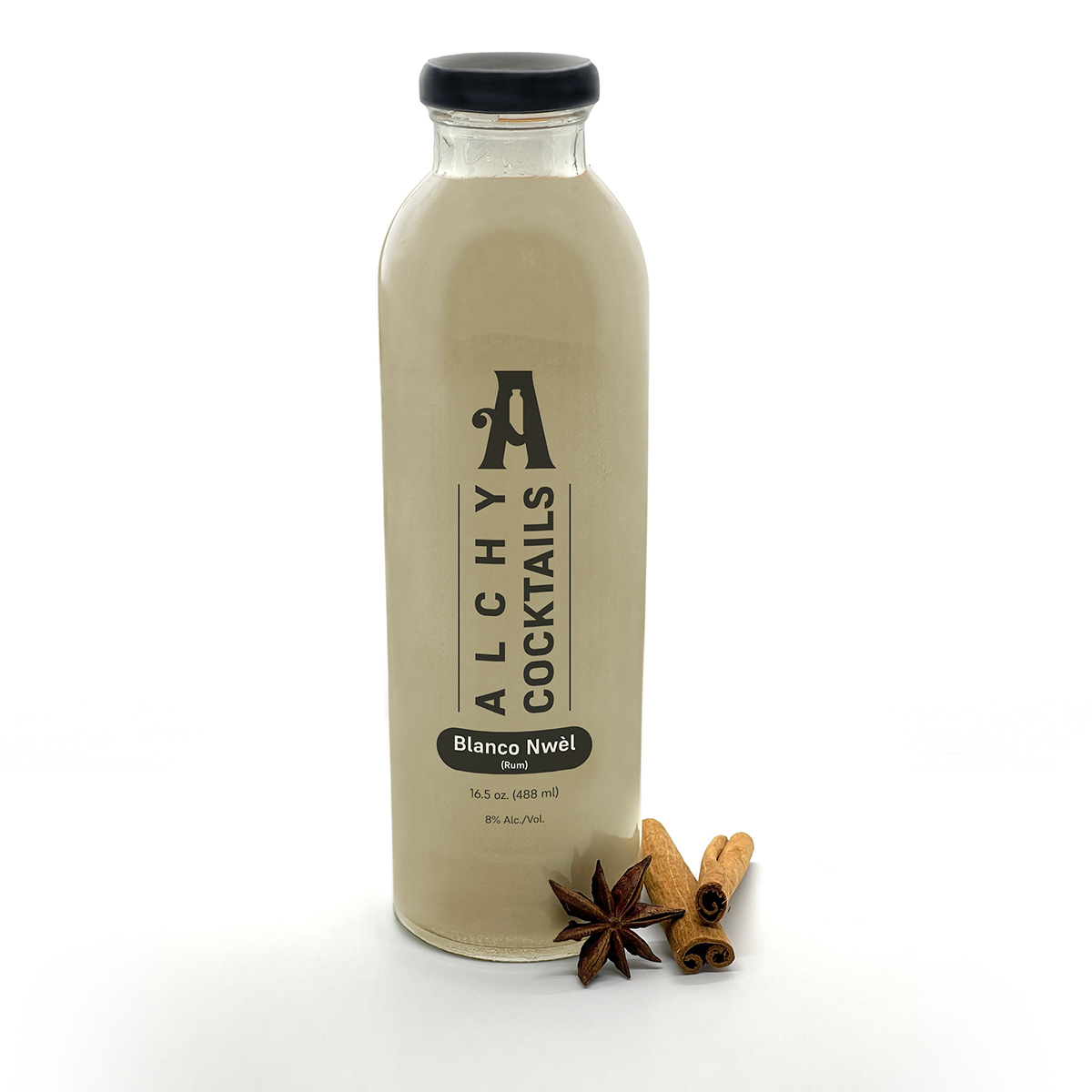
A spicy bite: Gordy’s Cajun Okra from Salt and Sundry. These spicy, tangy pickles pull on Southern Cajun-style flavors, packing a punch with paprika, cayenne, and more. Gordy’s is an LGBTQ-owned and Washington-based brand, making this gift an opportunity to support a local LGBTQ business straight from the jar. This pantry staple is available on Salt & Sundry’s website and at its locations in Union Market, Logan Circle, and its Georgetown holiday pop-up store. ($14)


To celebrate Washington pride: The DC Landmark Tote Bag from The Neighborgoods. Native Washingtonians, visitors, friends and family alike will find something to love about this Washington-themed tote bag. Food trucks, the 9:30 Club, the Metro logo and pandas from the National Zoo are just some of the city’s landmarks depicted across the tote in a red, white, and blue color palette. The tote is a part of the DC Landmarks collection, which donates 10 percent of its sales to the American Civil Liberties Union. The Neighborgoods itself is a local, woman-owned business built out of a passion for screen-printing in 2013. The 100 percent cotton canvas tote is for sale online or at the DowntownDC Holiday Market. ($22)
To give friends and family their flowers: The Flowers Bandana from All Very Goods. This 100 percent cotton bandana was designed in Washington and hand printed in India. Its uniqueness comes in being covered with the faces of Black women, representing a “love letter to all women but especially Black women,” according to All Very Goods. The Black woman-owned and operated business, based out of Northwest Washington, has a mission to celebrate diversity and representation through its products. The bandana intends to give Black women their “flowers.” The Flowers bandana is available for purchase online. ($24)

To unlock culinary creativity: The Curious Chef Gift Collection from Each Peach Market. This customizable collection of kitchen oddities — ranging from tinned fish to chili oil — is a quirky gift for the most inventive chefs. The collection is available in a Standard Santa, Extra Goodies and Super Holiday Size for up to $165. The Washington-based market, founded in 2013, permits customers to make the collection special by specifying what unique ingredients are packaged, including products made by local or LGBTQ brands. Each Peach Market offers assembly and pick up in-person at its Mount Pleasant shop and also offers local delivery and nationwide shipping via its website. ($85)
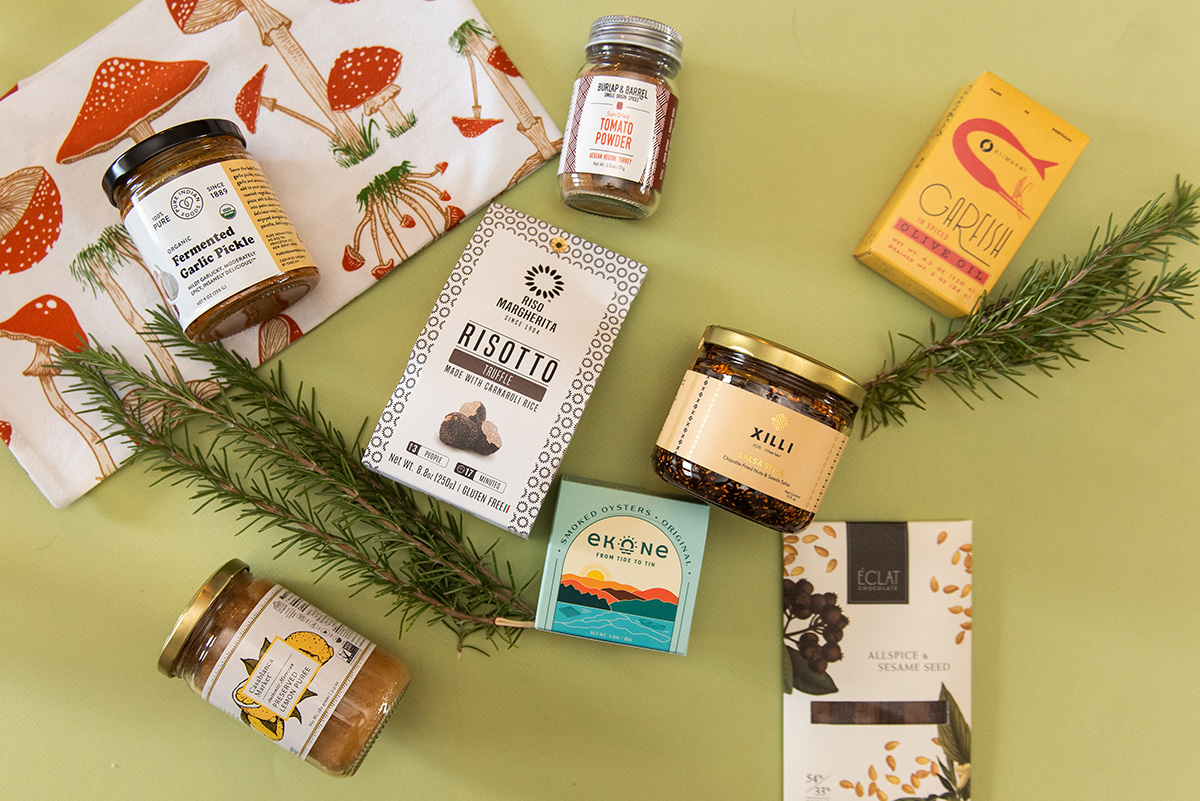
To give a touch of sweetness: The DC Landmark Chocolate Covered Oreo Holiday Cookies from Capital Candy Jar. Wrapped in a festive red bow, this box of nine cookies embraces love for Washington and the holiday season in one. Among the dark and milk chocolate covered cookies are images of the U.S. Capitol, the White House, the Lincoln Memorial, the Jefferson Memorial and festive hollies. The treat, packaged in a Hill East facility just a few blocks from the Capitol, is available for purchase online and at the DowntownDC Holiday Market. ($23.95)
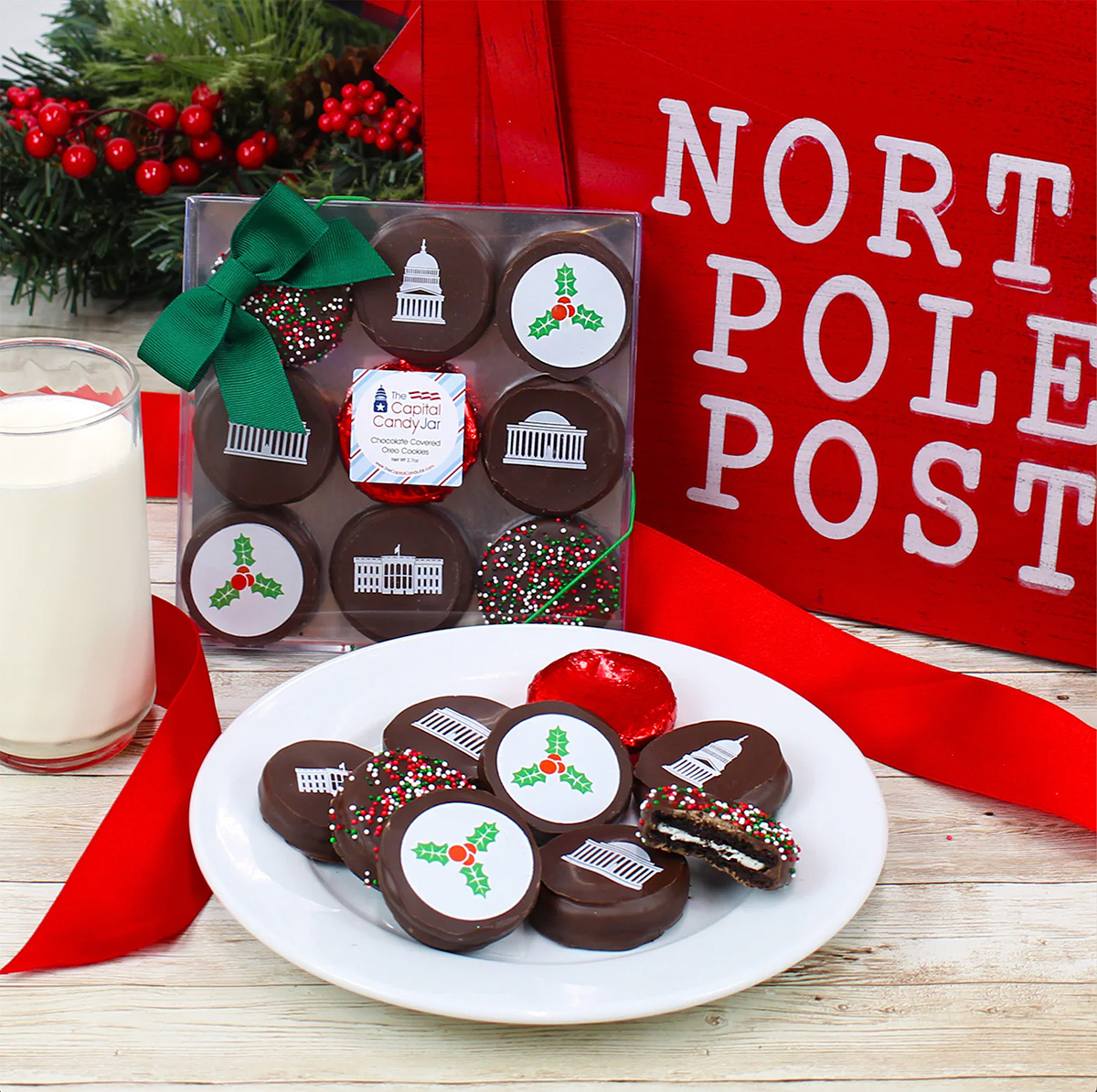

To celebrate queer gaming: Thirsty Sword Lesbians from Labyrinth Games & Puzzles. This roleplaying game embraces lesbian culture by unlocking a world of swords, romance, and battle. Ideal for group settings, the book presents a system of world building and character identities that are best brought to life by creative minds. Labyrinth, which has been a local Washington business for more than 15 years, celebrates non-digital fun through games and puzzles that connect the community. This gift is offered online and at Labyrinth’s Capitol Hill location. ($29.99)
To make a bold statement: The “Resist” T-shirt from Propper Topper. This locally screen-printed black tee features the Washington flag designed within a raised fist, symbolizing both Washington pride, and political resistance. The shirt is made exclusively by Propper Topper, a local Washington business that evolved from a hat shop to a gift store since opening in 1990. The tri-blend unisex shirt is available both for pickup at Propper Topper’s Cathedral Heights location and shipping via the online site. ($32)
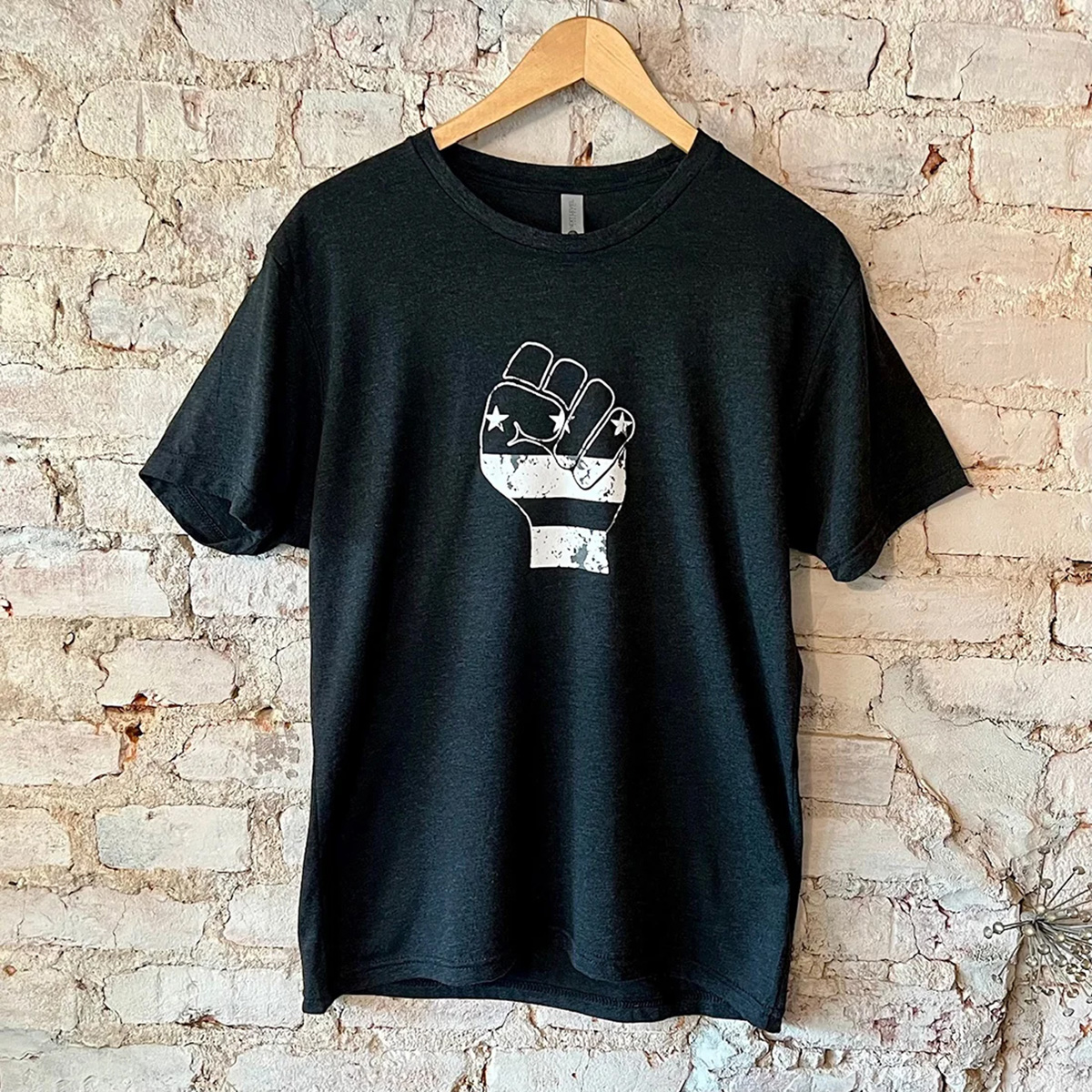
To keep it c(g)lassy: The Glass Ball earrings from Blue Moon Aquarius. Gifting can rarely go wrong when it comes to a new pair of earrings. The unique statement earrings — made of polymer clay, glass, and 18k gold plating over surgical steel — are hand cut, sanded and assembled in Washington, meaning each set is unique. Blue Moon Aquarius, a local brand, is known for its small batch jewelry and home decor designed with clay materials. Available in oxblood, hunter green, lavender, and bluestone color palettes, these earrings are available for purchase on Blue Moon Aquarius’ website and at the DowntownDC Holiday Market. ($48)
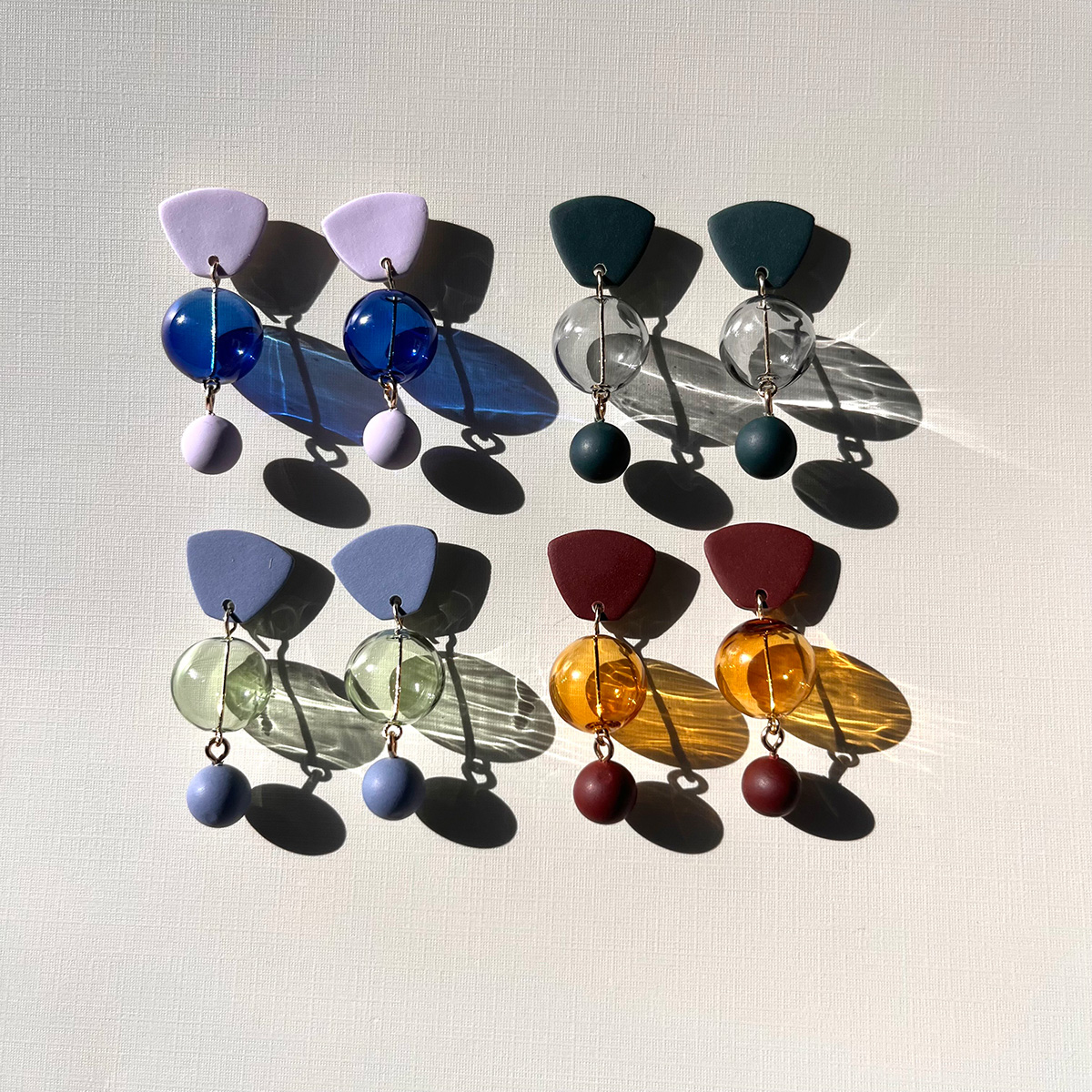
To elevate a holiday tea or charcuterie party: The Honey Flight: Tea Lover’s Selection from BannerBee. This local honey company presents the ideal gift to make cozying up with a cup of tea slightly more special. The Honey Flight contains three types of raw wildflower honey infused with fair trade Ugandan vanilla bean, chai spices, and locally sourced lemon thyme herb. The gift is also an opportunity to uplift a family company based in the Mid-Atlantic that offers all-natural, sustainable products. The flight is available online, at the DowntownDC Holiday Market or at the Arlington Courthouse and Dupont Farmers’ Markets. ($36)
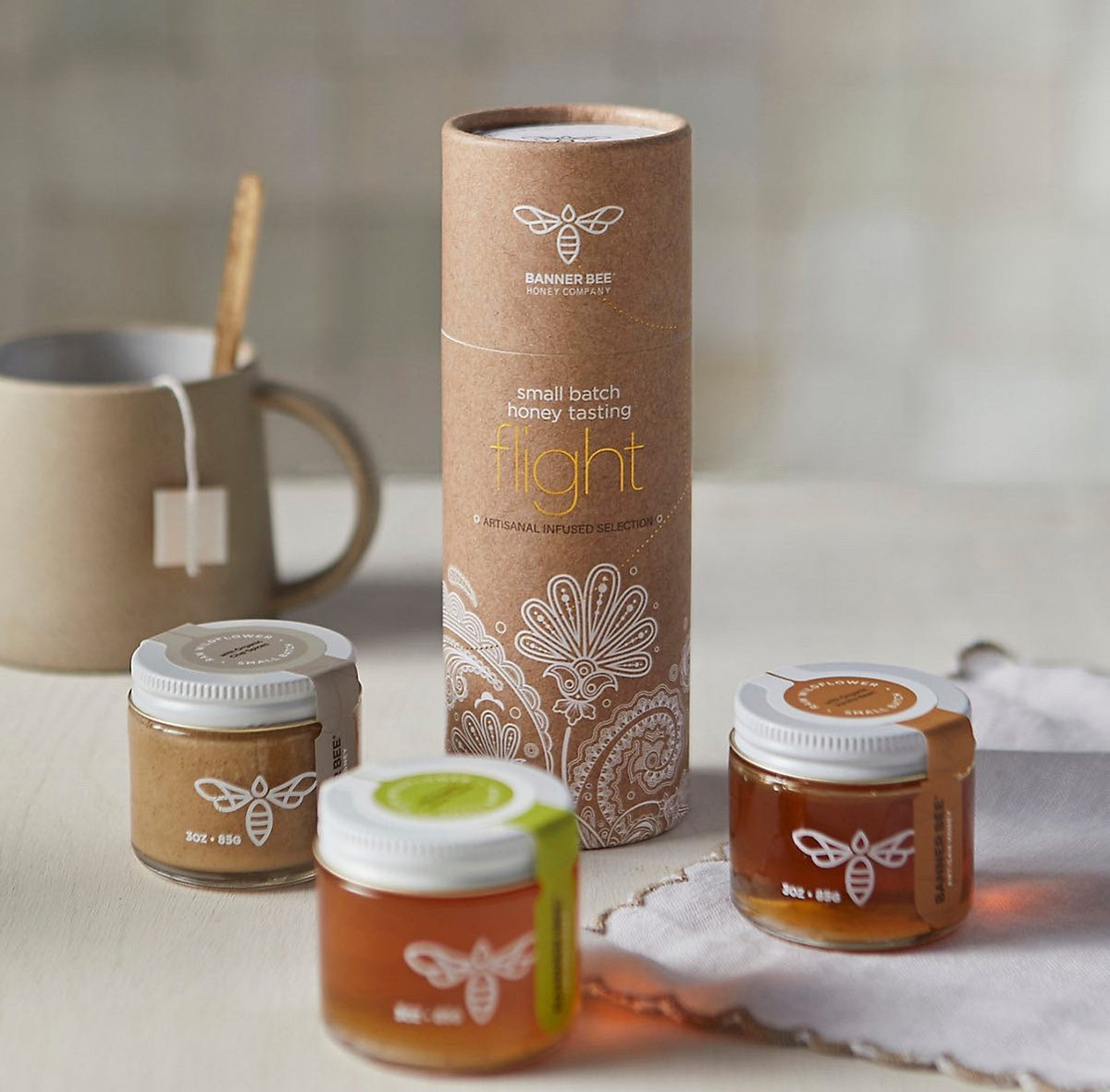
For Baltimore shoppers: If you’re in Charm City, don’t miss Balston Mercantile, opened by a gay couple in June. Their gorgeous shop in the Hampden neighborhood offers an array of unique, upscale finds, from barware and artwork to cookbooks and home decor and more. (849 W. 36th St.)


















